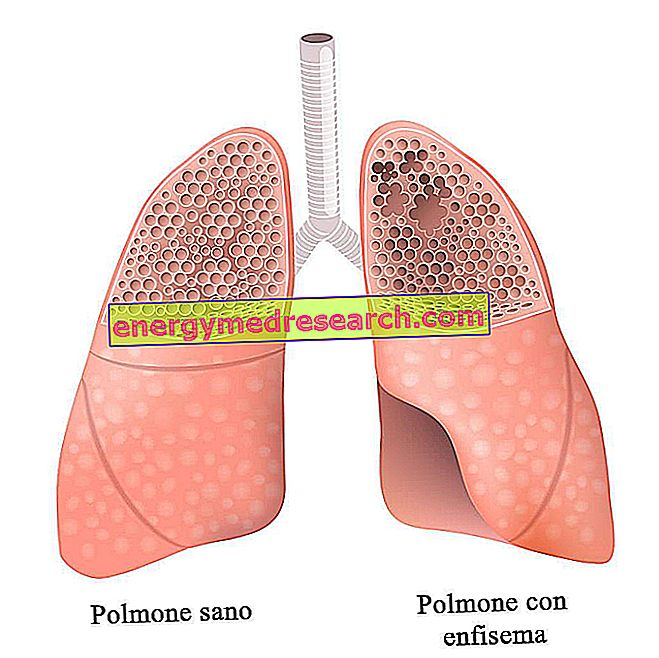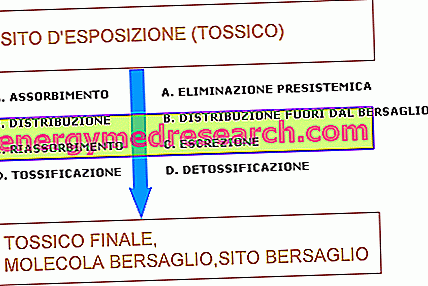Generality
Pompe disease (or type II glycogen storage disease ) is a rare inherited disorder characterized by an excessive accumulation of glycogen .

The damage that results from the failure to dispose of this glucose polymer is expressed above all in the liver, myocardium and skeletal muscles, which undergo a progressive weakening .
Pompe disease is caused by a genetic aberration that results in a defect in the activity of the acid alpha-1, 4-glucosidase enzyme ( GAA or maltase acid ) within the lysosomes (intracellular organelles, where the degradation of various types of molecules).
The infantile form of type II glycogenosis leads to a serious form of cardiomegaly which can cause death by cardiorespiratory decompensation within the second year of life. In late-onset Pompe disease, however, the symptoms are limited to the muscle and, compared to the infantile variant, the progression of this progressive myopathy is relatively benign.
What's this
Glycogen: key points
- Glycogen is the main reserve polysaccharide in animal cells.
- The glycogen is made up of glucose subunits and is accumulated, as a deposit source, in the cytosol of the liver (where it is particularly abundant), of the skeletal muscle and, to a lesser extent, of the kidney.
- Glycogen is used by the body to support blood sugar during periods of fasting, normally between meals, and during the night.
What is Glycogenosis?
Glycogenosis is a group of rare diseases caused by the hereditary deficiency of one or more enzymes involved in glycogen metabolism . These conditions are compounded by excess glycogen deposits in various organs.
Pompe disease - Type II glycogenosis: what is it?
Pompe disease is a hereditary, chronic and progressive pathological condition, characterized by the accumulation of glycogen inside the cells or some intracellular organelles, such as lysosomes.
Because of the defect of the enzyme responsible for the degradation of glycogen, the latter accumulates and damages the heart, the muscles of the legs and arms and those of respiration.
Pompe disease: synonyms and terminology
Also called type 2 glycogen storage disease, Pompe disease falls into the group of lysosomal storage disorders .
The synonyms of this pathology are numerous and include:
- Acid alpha-1, 4-glucosidase deficiency ;
- Glycogenosis due to acid maltase deficiency ;
- Glycogen storage disease type 2 (also referred to as: glycogen storage disease type II ; glycogen storage disease, type 2 or GSD, type 2 );
- Type 2 glycogen storage disease .
Causes
Pompe disease - Type II glycogenosis: what are the causes?
Pompe disease is a lysosomal storage disorder caused by the congenital deficiency of a lysosomal enzyme - called alpha-1, 4- acid glucosidase (or acid maltase ) - normally responsible for the disposal of glycogen .
In type II glycogen storage disease, this enzyme defect results in:
- Disorders due to the body's inability to correctly use glucose stored as glycogen;
- Alterations caused by the accumulation of glycogen itself in lysosomes (intra-lysosomal) or outside these (extra-lysosomal).
The enzyme deficiency at the base of Pompe's disease is, in fact, ubiquitous, but the resulting damage is expressed above all in certain organs (including heart and / or skeletal muscle).
How is Pompe disease transmitted?
- At the base of Pompe disease there are some mutations of the GAA gene, located on chromosome 17q23 .
- The gene defect is transmitted in an autosomal recessive manner : this means that the parents must be both "healthy carriers" of the mutation and, at each pregnancy, they will have a 25% risk of generating children suffering from Pompe disease, 50% probability to have healthy children and 25% to have healthy children who are not carriers.
- The pathogenetic mutations of type II glycogenosis are heterogeneous, which is why the clinical presentation of the disease is variable. Some aberrations are more common than others. In any case, the result is the impairment of the normal activity of the lysosomal enzyme, from which it follows the accumulation of glycogen.
Symptoms and Complications
Pompe disease - Type II glycogenosis: how does it manifest?
Pompe disease has a complex and heterogeneous clinical presentation, which depends on the different degree of deficiency of the acid alpha-1, 4-glucosidase, probably related to the different mutations of the GAA gene that codes for the same enzyme.
Typically, type II glycogen storage disease is characterized by variable damage to muscle tissue (myocardium, skeletal muscle and respiration) and the liver.
In general, the impairment of lysosome activity progressively leads to a deficit of muscle strength.
Childish form
The infantile form of Pompe disease occurs before 3 months of life with:
- Hypotonia of skeletal musculature;
- Tongue enlargement;
- Difficulty in sucking and swallowing;
- Hypertrophic cardiomyopathy;
- Progressive hepatomegaly;
- Mental delay.
The infantile forms of Pompe disease are the most serious, as they lead to:
- Cardiomegaly (cardiac dilation that can cause death by heart failure);
- Severe muscle weakness, with delayed acquisition or regression of motor skills.
In the absence of treatment, in the infantile forms of Pompe's disease, death occurs before the two years of life, due to cardiorespiratory decompensation .
Late or adult form
In late forms - that is, at any age after the first year of life - on adolescent or "adult" onset of type II glycogenosis, progression is slow and the consequences are less unfavorable than infantile ones, since the heart is generally spared.
Pompe disease mainly affects the muscles, affected by a weakening that starts from the lower limbs and ends up causing respiratory problems .
Over time, in fact, this myopathy can lead to the inability to ambulate independently, while the ventilatory capacity is gradually compromised, leading to respiratory failure. Without treatment, patients with type II glycogen storage disease must have either assisted ventilation or a tracheostomy.
Note
Regarding the clinical picture, the infantile and late form represent two extremes of Pompe's disease. Between these two variants, there is a wide spectrum of intermediate forms .
Diagnosis
How is the diagnosis of type 2 glycogenosis made?
The diagnosis of Pompe disease is based on clinical observation and evidence of enzyme deficiency. In particular, to confirm the suspicion, the enzymatic activity of GAA is measured in cultured skin fibroblasts, in lymphocytes or in a muscle biopsy sample:
- In children with the infantile form of Pompe disease, the activity of the acid alpha-1, 4-glucosidase is practically absent;
- In the late form, different levels of residual enzyme activity are found.
Furthermore, genetic (including prenatal) analysis can be performed by searching for mutations in the GAA gene . Early diagnosis can help improve patients' quality of life.
Pompe disease: differential diagnosis
The differential diagnosis of the late form arises with the other causes of myopathy.
The infantile form of Pompe disease must be distinguished mainly by:
- Werdnig-Hoffman disease (SMA type 1);
- Hypertrophic cardiomyopathy (idiopathic or metabolic).
Pompe disease: is prenatal diagnosis possible?
Prenatal diagnosis of Pompe disease can be performed through:
- Measurement of enzymatic activity on fresh chorionic villi by the 12th week of pregnancy;
- Search for GAA gene mutations on fetal cells, taken from amniotic fluid, at the 15th week of pregnancy.
Currently, this disease is not among those covered by neonatal screening (note: to date, a pilot experimentation is underway in some regions, including Tuscany and Veneto).
Treatment
Pompe disease: what treatments are available?
The treatment options currently available for type 2 glycogen storage disease are represented by enzyme replacement therapy : since 2006, the European Union has authorized the marketing of an orphan drug for the treatment of patients suffering from Pompe disease, called alglucosidase alfa . In practical terms, the therapy involves the periodic intravenous administration (once every two weeks) of the biotechnologically produced enzyme, by recombinant route.
Enzyme replacement therapy is more effective if given at an early stage of the disease. As regards the results obtainable with this approach, enzyme replacement therapy with recombinant human GAA is very effective in infantile Pompe disease, as it significantly prolongs survival and reduces cardiomyopathy. In some late forms, this therapeutic approach can lead to the stabilization of the disease.
Other possible interventions
The management of Pompe disease may include symptomatic treatment and some drugs that can improve the effects of enzyme replacement therapy.
The possibility of exploiting gene therapy for type 2 glycogen storage is still under study.



